 W
WA caliphate or khilāfah is an Islamic state under the leadership of an Islamic ruler with the title of caliph, a person considered a politico-religious successor to the Islamic prophet Muhammad and a leader of the entire Muslim world (ummah). Historically, the caliphates were polities based on Islam which developed into multi-ethnic trans-national empires. During the medieval period, three major caliphates succeeded each other: the Rashidun Caliphate (632–661), the Umayyad Caliphate (661–750), and the Abbasid Caliphate (750–1517). In the fourth major caliphate, the Ottoman Caliphate, the rulers of the Ottoman Empire claimed caliphal authority from 1517 and maintained Sunni Islam as the official religion. Throughout the history of Islam, a few other Muslim states, almost all hereditary monarchies such as the Abbasid caliphs under protection of Mamluk Sultanate (Cairo) and Ayyubid Caliphate, have claimed to be caliphates. The first caliph was Abu Bakr and the last caliph was Abdulmejid II.
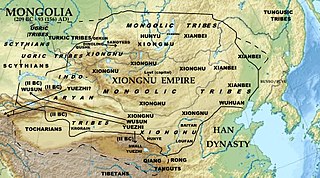 W
WChanyu or Shanyu, short for Chengli Gutu Chanyu, was the title used by the supreme rulers of Inner Asian nomads for eight centuries until superseded by the title "Khagan" in 402 CE. The title was most famously used by the ruling Luandi clan of the Xiongnu during the Qin dynasty and Han dynasty. It was later also used infrequently by the Chinese as a reference to Gokturk leaders.
 W
WA dictator is a political leader who possesses absolute power. A dictatorship is a state ruled by one dictator or by a small clique. The word originated as the title of a magistrate in the Roman Republic appointed by the Senate to rule the republic in times of emergency.
 W
WA doge was an elected lord and Chief of State in several Italian city-states, notably Venice and Genoa, during the medieval and renaissance periods. Such states are referred to as "crowned republics".
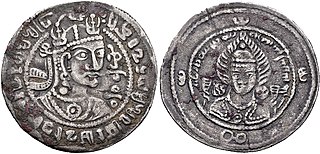 W
WElteber was the client king of an autonomous but tributary tribe or polity in the hierarchy of the Turkic khaganates including Khazar Khaganate.
 W
WEmir, sometimes transliterated amir, amier, or ameer, is a word of Arabic origin that can refer to a male monarch, aristocrat, holder of high-ranking military or political office, or other person possessing actual or ceremonial authority. The title has a long history of use in the Arab World, East Africa, West Africa, Afghanistan, and the Indian subcontinent. In the modern era, when used as a formal monarchical title, it is a cognate for prince, applicable both to a son of a hereditary monarch, and to a reigning monarch of a sovereign principality, namely an emirate. The feminine form is emira, a cognate for princess. Prior to its use as a monarchical title, the term "emir" was historically used to denote a "commander", "general", or "leader". In contemporary usage, "emir" is also sometimes used as either an honourary or formal title for the head of an Islamic, or Arab organisation or movement.
 W
WAn emperor is a monarch, and usually the sovereign ruler of an empire or another type of imperial realm. Empress, the female equivalent, may indicate an emperor's wife, mother, or a woman who rules in her own right. Emperors are generally recognized to be of the highest monarchic honour and rank, surpassing kings. In Europe, the title of Emperor has been used since the Middle Ages, considered in those times equal or almost equal in dignity to that of Pope due to the latter's position as visible head of the Church and spiritual leader of the Catholic part of Western Europe. The Emperor of Japan is the only currently reigning monarch whose title is translated into English as "Emperor", although he holds no actual political power, nor is Japan an empire.
 W
WGrand Mughal or Mogul, also Great Mughal, is a title coined by Europeans for the ruler of the Mughal Empire of India. The Mughals themselves used the title Padishah. The title is especially associated with the third in the line, Akbar the Great (1542-1605). It is said that the Portuguese called Akbar the Grand Mughal and sent Jesuit missionaries to convert him to Catholicism.
 W
WHùng king is the title given to the ancient Vietnamese rulers of the Hồng Bàng period.
 W
WKhan is a historic title of Inner Asia used in some medieval Central Asian societies to refer to a ruler or military leader. It first appears among the Rouran and then the Göktürks as a variant of khagan and implied a subordinate ruler. In the Seljuk Empire, it was the highest noble title, ranking above malik (king) and emir (prince). In the Mongol Empire it signified the ruler of a horde (ulus), while the ruler of all the Mongols was the khagan or great khan. The title subsequently declined in importance. In Safavid Persia it was the title of a provincial governor, and in Mughal Empire it was a high noble rank restricted to courtiers. After the downfall of the Mughals it was used promiscuously and became a surname. Khan and its female forms occur in many personal names, generally without any nobiliary of political relevance, although it remains a common part of noble names as well.
 W
WKing of Champa is the title ruler of Champa. Champa rulers often use two Hinduist style titles: raja-di-raja or po-tana-raya.
 W
WKing of Kings was a ruling title employed primarily by monarchs based in the Middle East. Though most commonly associated with Iran, especially the Achaemenid and Sasanian Empires, the title was originally introduced during the Middle Assyrian Empire by king Tukulti-Ninurta I and was subsequently used in a number of different kingdoms and empires, including the aforementioned Persia, various Hellenic kingdoms, Armenia, Georgia and Ethiopia.
 W
WLandgrave was a noble title used in the Holy Roman Empire, and later on in its former territories. The German titles of Landgraf, Markgraf ("margrave"), and Pfalzgraf are in the same class of ranks as Herzog ("duke") and above the rank of a Graf ("count").
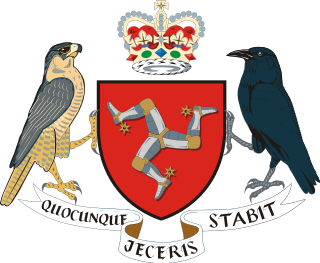 W
WThe Lord of Mann is the lord proprietor and head of state of the Isle of Man. The current lord proprietor and head of state is Elizabeth II. Before 1504 the head of state was known as King of Mann.
 W
WMahārāja ; is a Sanskrit title for a "great ruler", "great king" or "high king". A few ruled mighty states informally called empires, including ruler Maharaja Sri Gupta, founder of the ancient Indian Gupta Empire and Chandragupta Maurya. 'Title inflation' soon led to most being rather mediocre or even petty in real power, which led to compound titles being used in an attempt to distinguish some among their ranks.
 W
WMuhammad's letters to the heads of state are letters sent by Muhammad to many rulers of the world, inviting them to Islam.
 W
WNawab, also spelt Nawaab, Navaab, Navab, Nowab, Nabob, Nawaabshah, Nawabshah or Nobab, is a Royal title indicating a sovereign ruler, often of a South Asian state, in many ways comparable to the western titles of King. The relationship of a Nawab to the Emperor of India has been compared to that of the Kings of Saxony to the German Emperor. In earlier times the title was ratified and bestowed by the reigning Mughal emperor to semi-autonomous Muslim rulers of subdivisions or princely states in the Indian subcontinent loyal to the Mughal Empire i.e. Nawabs of Bengal. The title is common among Muslim rulers of South Asia as an equivalent to the title Maharaja.
 W
WNegus is a title in the Ethiopian Semitic languages. It denotes a monarch, such as the Negus Bahri of the Medri Bahri kingdom in pre-1890 Eritrea, and the negus in pre-1974 Ethiopia. The negus is referred to as Al-Najashi (النجاشي) in the Islamic tradition.
 W
WPadishah, sometimes rendered as Padeshah or Padshah, is a superlative sovereign title of Persian origin.
 W
WPharaoh is the common title now used for the monarchs of ancient Egypt from the First Dynasty until the annexation of Egypt by the Roman Empire in 30 BCE, although the term "pharaoh" was not used contemporaneously for a ruler until Merneptah, c. 1210 BCE, during the Nineteenth dynasty, "king" being the term used most frequently until the middle of the Eighteenth Dynasty. In the early dynasties, ancient Egyptian kings used to have up to three titles: the Horus, the Sedge and Bee (nswt-bjtj), and the Two Ladies or Nebty (nbtj) name. The Golden Horus as well as the nomen and prenomen titles were added later.
 W
WPodestà was the name given to the holder of the highest civil office in the government of the cities of Central and Northern Italy during the Late Middle Ages. Sometimes, it meant the chief magistrate of a city state, the counterpart to similar positions in other cities that went by other names, e.g. rettori ("rectors").
 W
WPoglavnik was the title used by Ante Pavelić, leader of the World War II Croatian movement Ustaše and of the Independent State of Croatia between 1941 and 1945.
 W
WThe pope, also known as the supreme pontiff or the Roman pontiff, is the bishop of Rome, head of the worldwide Catholic Church and head of state or sovereign of the Vatican City State. According to Catholics, the primacy of the bishop of Rome is largely derived from his role as the apostolic successor to Saint Peter, to whom primacy was conferred by Jesus, giving him the Keys of Heaven and the powers of "binding and loosing", naming him as the "rock" upon which the church would be built. The current pope is Francis, who was elected on 13 March 2013.
 W
WPresident for life is a title assumed by or granted to some presidents to extend their tenure up until their death. The title sometimes confers on the holder the right to nominate or appoint a successor. The usage of the title of "president for life" rather than a traditionally autocratic title, such as that of a monarch, implies the subversion of liberal democracy by the titleholder. Indeed, sometimes a president for life can proceed to establish a self-proclaimed monarchy, such as Jean-Jacques Dessalines and Henry Christophe in Haiti.
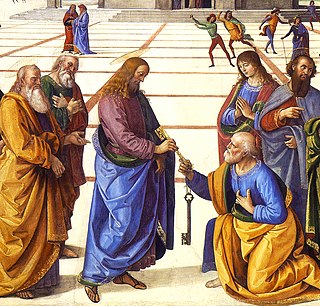 W
WThe term Prince of the Church is today used nearly exclusively for Catholic cardinals. However, the term is historically more important as a generic term for clergymen whose offices hold the secular rank and privilege of a prince or are considered its equivalent. In the case of cardinals, they are always treated in protocol of Catholic countries as equivalents of royal princes.
 W
WA prince-abbot is a title for a cleric who is a Prince of the Church, in the sense of an ex officio temporal lord of a feudal entity, usually a State of the Holy Roman Empire. The territory ruled by a prince-abbey is known as a princely abbey, a prince-abbacy or an abbey principality. The holder, however, does not hold the ecclesiastical office of a Bishop.
 W
WA prince-bishop is a bishop who is also the civil ruler of some secular principality and sovereignty. Thus the principality or prince-bishopric ruled politically by a prince-bishop could wholly or largely overlap with his diocesan jurisdiction, but some parts of his diocese, even the city of his residence, could be exempt from his civil rule, obtaining the status of free imperial city. If the episcopal see is an archbishop, the correct term is prince-archbishop; the equivalent in the regular (monastic) clergy is prince-abbot. A prince-bishop is usually considered an elected monarch.
 W
WSahib or Saheb is a word of Arabic origin meaning "companion". As a loanword, it has passed into several languages, including Persian, Kurdish, Turkish, Kazakh, Uzbek, Turkmen, Tajik, Crimean Tatar, Urdu, Hindi, Punjabi, Pashto, Bengali, Gujarati, Marathi, Rohingya and Somali. It can be used as a term of address, either as an official title or an honorific. It is often shortened to saab.
 W
WThe Sapa Inca was the ruler of the Kingdom of Cuzco and later, the Emperor of the Inca Empire (Tawantinsuyu) and the Neo-Inca State. While the origins of the position are mythical and originate from the legendary foundation of the city of Cusco, it seems to have come into being historically around 1100 CE. Although the Inca believed the Sapa to be the son of Inti and often referred to him as Intip Churin or ‘Son of the Sun,’ the position eventually became hereditary, with son succeeding father. The principal wife of the Inca was known as the Coya or Qoya. The Sapa Inca was at the top of the social hierarchy, and played a dominant role in the political and spiritual realm.
 W
WSardar, also spelled as Sirdar, Sardaar, Shordar or Serdar, is a title of nobility that was originally used to denote princes, noblemen, and other aristocrats. It has also been used to denote a chief or leader of a tribe or group. It is used as a Persian synonym of the Arabic title Emir.
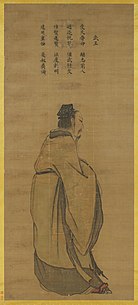 W
WSon of Heaven, or Tianzi, was the sacred imperial title of the Chinese emperor. It originated with the ancient Zhou dynasty and was founded on the political and spiritual doctrine of the Mandate of Heaven. The secular imperial title of the Son of Heaven was "Emperor of China".
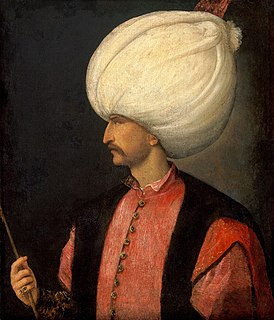 W
WSultan is a position with several historical meanings. Originally, it was an Arabic abstract noun meaning "strength", "authority", "rulership", derived from the verbal noun سلطة sulṭah, meaning "authority" or "power". Later, it came to be used as the title of certain rulers who claimed almost full sovereignty in practical terms, albeit without claiming the overall caliphate, or to refer to a powerful governor of a province within the caliphate. The adjective form of the word is "sultanic", and the dynasty and lands ruled by a sultan are referred to as a sultanate.
 W
WSultana or sultanah is a female royal title, and the feminine form of the word sultan. This term has been officially used for female monarchs in some Islamic states, and historically it was also used for sultan's consorts.
 W
WThe history of Panama includes the long history of the Isthmus of Panama region prior to European colonization, from Pre-Columbian cultures, through the Spanish colonial era, and eventual independence as the modern country of Panama.
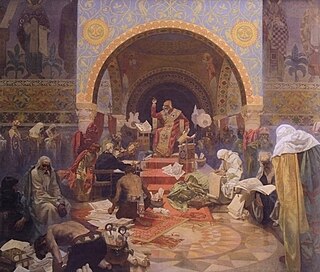 W
WTsar, also spelled czar, tzar, or csar, is a title used to designate East and South Slavic monarchs or supreme rulers of Eastern Europe, originally the Bulgarian monarchs from 10th century onwards, much later a title for two rulers of the Serbian Empire, and from 1547 the supreme ruler of the Tsardom of Russia and the Russian Empire. In this last capacity it lends its name to a system of government, tsarist autocracy or tsarism. The term is derived from the Latin word caesar, which was intended to mean "emperor" in the European medieval sense of the term—a ruler with the same rank as a Roman emperor, holding it by the approval of another emperor or a supreme ecclesiastical official —but was usually considered by western Europeans to be equivalent to king, or to be somewhat in-between a royal and imperial rank.
 W
WWorld Leaders, also known as Chiefs of State and Cabinet Members of Foreign Governments, is a public domain directory published weekly by the United States Central Intelligence Agency. It lists different state officials for each country of the world: the head of state and/or head of government and other cabinet ministers, the chief of the central bank, and the ambassadors to the United Nations and the United States.